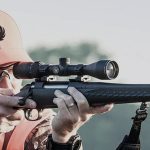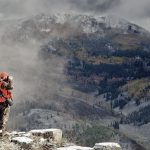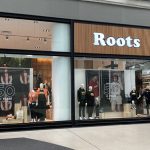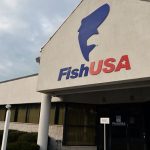Was it the warm weather in the East? Maybe the fires in the West? Or did consumers simply run out of tax rebate money? Maybe they just took a break during October to gear up for the Holiday shopping season.
Whatever the specific reason for the weak October comparable store sales numbers, it gave some analysts plenty of fodder to start speculating that the Back-to-School resurgence at retail may have been a blip and many sounded alarms for the Holiday shopping season. Others saw October as the blip and reiterated bullish Holiday forecasts.
The Bank of Tokyo-Mitsubishi Ltd monthly survey of chain stores indicated that a preliminary tally of October same-store sales was up 3.2%, better than the reduced estimate of a 2.5% gain for the month, but below the initial forecast of a 3.5% gain. Thomson First Calls tally of results showed a 3.1% gain for the month. The results were even with the 3.2% comp sales increase in the year-ago period, and followed the strong 5.9 % gain in September.
For a complete rundown of results for all stores reporting this month that impact our industry, please refer to the comprehensive chart on page 9 (SEW_0345).
Retailers that specialize in seasonal products were hardest hit, pointing to the weather as a primary factor, as department stores, clothing stores and footwear stores all trended lower for the month. However, sales were relatively robust at the higher end of the market. The consumer here, on average, did not receive tax rebate checks and their spending did not appear to dip from September.
While October is one of the least important months in the retail sales calendar, analysts do look at the month for indications of how retailers will fare during the holiday season.
“These numbers are not good,” said Ken Perkins, retail analyst with Thomson Financial. As one other analyst quipped, “October will be the nightmare before Christmas.”
Perkins added, “After a stellar September for retailers, it was a given to expect some weakness last month. But this is pretty amazing. I don't think I've seen this much red on the board.”
“The worst part of these results is that they show that the effect of the tax rebate checks has petered out. This is a nightmare in itself for retailers and it doesn't bode well for Christmas,” said Kurt Barnard, an independent retail consultant.
“It is not just the weather,” Barnard continued. “Consumers are not continuing to spend as liberally as a lot of retailers thought they would.” Barnard also pointed to the potential for weaker profits in Q4 due to heavier inventories that may need to be marked down.
While a few analysts were pointing to the October numbers as an indicator of future sales, they also looked at broader indicators in the economy that could mean good times ahead for the retail sector.
“Is this just a blip on the radar? I think it could be,” said Perkins. “The economy seems to be snapping back. The third-quarter GDP number was a blowout number. I don't think it will be that great in the fourth quarter, but consumer spending will hold through the holidays. Also, retailers will be benefiting from easier comparisons in November and December.”
Productivity of U.S. companies in the third quarter posted the best showing since early 2002 and the Labor Department reported that new claims for unemployment benefits last week fell to the lowest level in more than two years.
Steve Spiwak, an economist at consulting firm Retail Forward, said consumers were “taking a breather” after binging in the summer and also called the October results “a small blip.”
However, he did warn that while consumers have been spending the tax rebates they received late in the summer, retail sales are likely to show some signs of slowing when the money is gone.
Others point to reduced tax rates going forward that should keep more money in consumers pockets in the fourth quarter and next year.
The results in the sporting goods, athletic footwear and athletic apparel sector were mixed, but weather played a big part in the tough numbers for a few key retailers.
Galyan's Trading Company reported comparable store results for the third quarter, but does not provide results by month. Comps for Q3 2003 declined 5.7%. GLYN continues to add stores, driving total sales up 13.8% for the quarter. The retailer hasnt reported a positive same-store sales quarter since Q2 2002.
GLYN saw positive comps in athletic apparel and the SnowSports, Racquet Sports and Baseball hardgoods categories, while softness in casual apparel and outdoor apparel and equipment offset any positive gains. The company said that August and September were “significantly better” than the year-ago quarter, but the warmer weather in the Midwest and Northeast “dramatically impacted” results in the outdoor business in October. They look for improving trends as the temperatures cool in the current quarter.
On the other end of the spectrum, Gander Mountain saw Q3 comps jump 14.3%, recording its “12th consecutive month of comparable store increases”. Comps are up 11.9% YTD.
Total sales surged 40.3% in the third quarter as the outdoor retailer continued its aggressive growth strategy, opening four large-format “Superstores” during the period.
In the athletic footwear channel, Foot Locker, Inc. reported a 0.4% comparable store sales increase for the third quarter. Total sales for the period grew 6.6%, or 3.3% in currency-neutral terms, to $1.2 billion.
In discussions with senior management at Foot Locker, Sports Executive Weekly found that the U.S. “Locker” business, which includes Foot Locker, Lady Foot and Kids Foot, posted improving comps which were off in the “very low singles” for the quarter. The Champs business was also off in “very low singles”. The “Dot Com” business, which includes the Eastbay and Footlocker.com direct businesses, was up in the “mid to high singles”. Europe again continues to deliver nice results, posting comp store sales gains in the “mid singles” for Q3.
Key product categories in the quarter included Classics and brown sneakers, while apparel was said to be doing “very well”, driven by Licensed and Private Label.
Management said that each month during the quarter posted “low single digit” positive comps, but sales were “zigging and zagging” throughout the period. The company said the results had “more to do with what we did last year” rather than any new initiatives this year, pointing to the fact that the 2003 quarter was “less promotional” than the year-ago period that saw a greater emphasis on BOGOs. The result is better margins on the lower sales figures in the U.S.
The improved margins and tight expense controls has prompted the company to forecast that third quarter 2003 EPS from continuing operations will exceed previous guidance and analysts' estimates of 31 cents to 33 cents per share.
Urban Outfitters also saw a nice uptick in their direct-to-consumer business, which jumped 48% in the third quarter. Same-store sales increased 17% for the period and the number of stores in operation grew by 23%. Comparable store sales at Urban Outfitters Retail increased 15% fro the period. Total sales for the third quarter increased 29% to $142.3 million.
The Family Footwear channel in the mid-market were hit particularly hard in the October period, with Shoe Carnival posting a 9.0% decline in comps and Famous Footwear declining 4.9% for the month.
Total sales at Famous Footwear dipped 2.8% to $70.2 million after a strong September showing and a 0.5% increase in the year-ago month. Third quarter sales increased 2.4% and same-store sales declined 2.5% for the 13-week period.
The retailer pointed to the warm weather in October that “negatively affected sales of seasonal footwear”. Conversion rates are still running ahead of last year, but the average ticket price declined as boots and cold-weather casuals slowed in the warm weather. Athletic footwear “outperformed the chain”.
Shoe Carnival was up against warmer weather and a strong October last year that president and CEO Mark Lemond said was “driven by promotional selling and near perfect weather conditions for selling fall product”. Comparable store sales decreased 9.0% this year versus a 13.7% increase in comps in October 2002. Comparable store sales inched up 0.3% for the third quarter. Total sales decreased 0.6% to $37.7 million for October and increased 10.6% to $152.4 million in Q3.
The weakness in boots and other fall categories drove the Mens and Womens dress/casual categories down in the “mid teens”. The Athletic business was “flat”. Kids was down in “mid singles”.
On a positive note, gross margin in October improved against last year due to fewer promotions. Inventory is down 3.0% on a per store basis, on top of a 5.0% reduction in the previous year. The company now estimates that Q3 earnings will be approximately 42 cents per share, which represents “about a 10% increase” in EPS over the year-ago period.
Elsewhere in the mid-market channel, Kohls is busy proving that whatever goes up, must come down, as the fast-growing retailer posted a double-digit decline for the October period. Comp store sales fell 11.6% versus an 18.3% increase in comps in the year-ago month. Total sales increased 2.9% in October and increased 11.7% for the quarter. Comparable store sales for Q3 decreased 1.3%.
“Kohl's is having a major disconnect with its customers,” said Bill Dreher, analyst with Deutsche Bank Securities. “The company's inventory growth is outpacing sales and I think their problems will continue into the fourth quarter and even the first quarter next year.”
Back in the mall, Pacific Sunwear started to soften its stellar growth pattern, as consolidated same-store sales increased just 4.6% after also making a habit of posting double-digits gains. PSUN saw comp store sales increase 18.6% in the year-ago period. PacSun same-store sales were up 3.4% and d.e.m.o. same-store sales grew 14.1% for the month. Total sales for the month increased 14.7% to $62.6 million.
By gender, the guys business was down in “mid single digits”, while the girls business was “slightly positive”. On a category basis, accessories comps were up in up in the “mid teens” and footwear comps gained in excess of 20%. Fall apparel categories were said to be weak. Fleece was down 2.0%. Tees and denim comps were “very strong” in guys, while the girls business saw “very strong” comps in Tees, wovens and pants.
Third quarter same-store sales increased 13.8% for the third quarter of fiscal 2003 with PacSun comps gaining 13.2% and d.e.m.o. same store sales jumping 19.9%.
For broader results for over 40 retailers, please refer to the following chart.*p11 SEW_0345*












